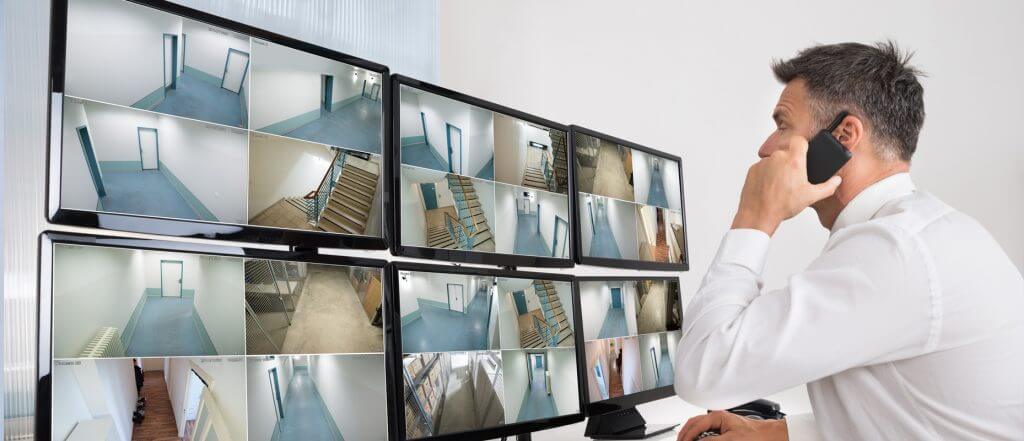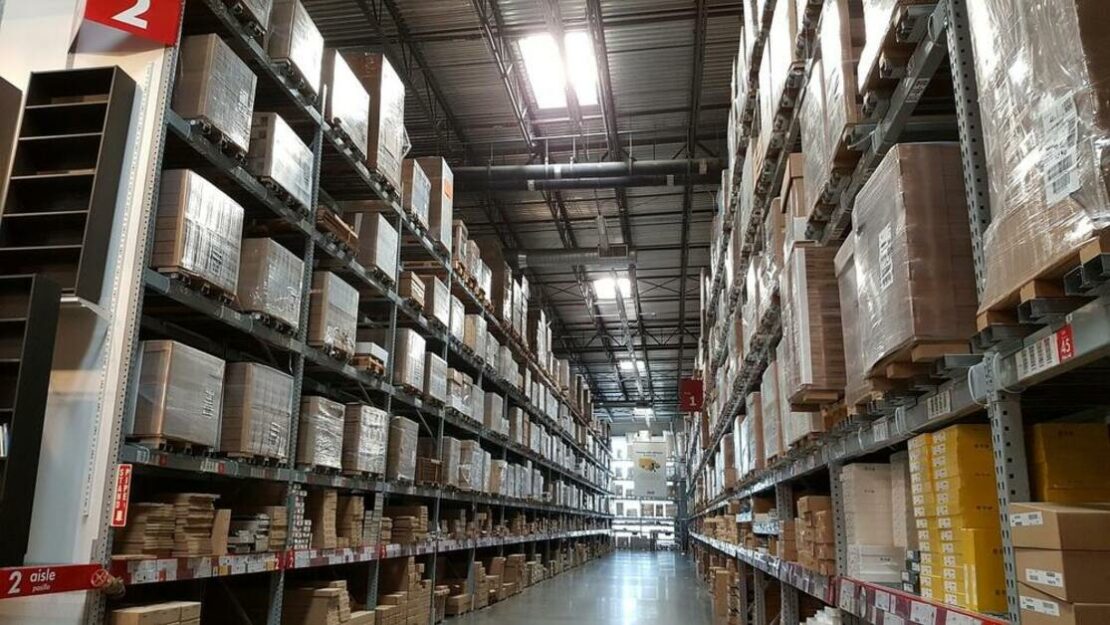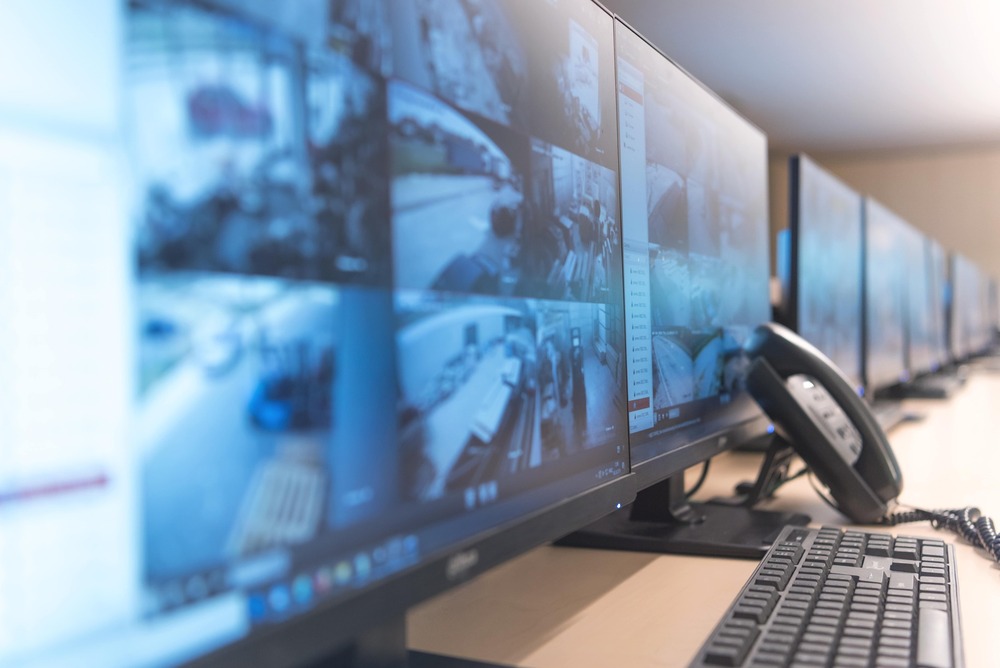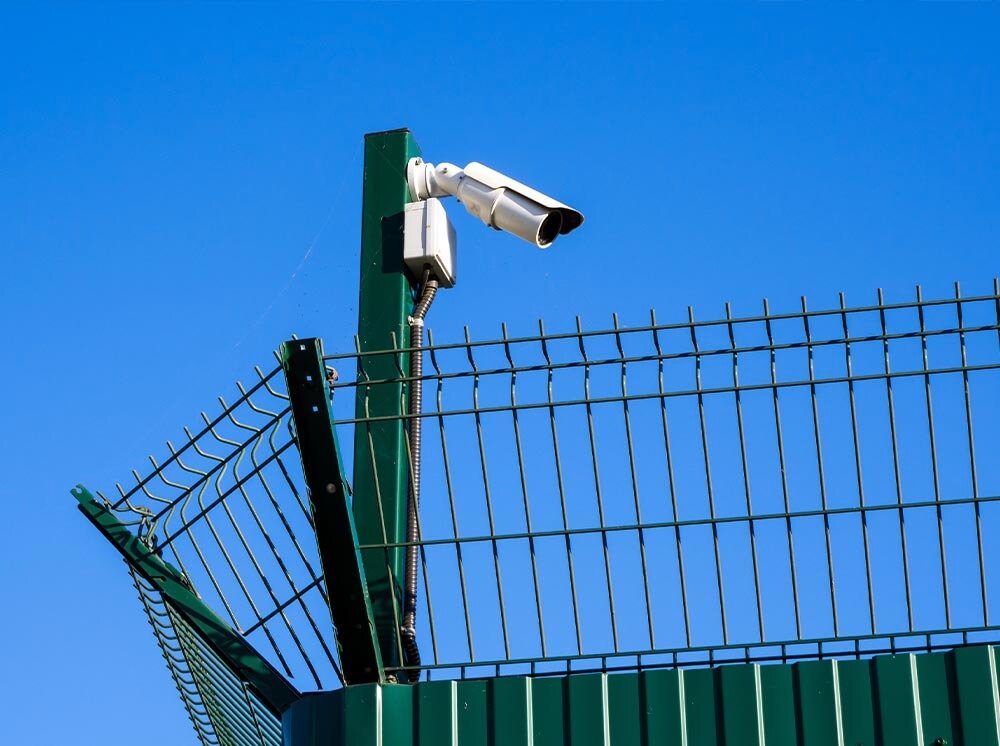
In this short blog, we answer some of the most common questions we recieve about CCTV monitoring. More and more businesses are starting to upgrade their CCTV systems and outsource security via remote CCTV monitoring.
There are many reasons for this, ranging from cost savings, improved crime prevention and more.
Here are the main questions customers ask us around CCTV monitoring. They include:
Table of contents
- Can you have your CCTV monitored remotely 24/7?
- What is keyholder and what do they do?
- What is CCTV monitoring?
- How does remote CCTV monitoring work?
- What are the benefits of monitored CCTV systems?
- What are the costs of CCTV monitoring?
- Is 24/7 monitored CCTV right for my business?
- Can CCTV monitoring reduce the cost of security?
- Are there any other types of monitored security systems?
- Interested in CCTV monitoring for your business?
Can you have your CCTV monitored remotely 24/7?
The short answer is yes! If your CCTV system can connect to a fast internet connection, tou can monitor it remotely.
We’ll go into much more detail on questions such as, what is CCTV monitoring and how does CCTV monitoring work, later in this blog, however here’s a quick summary.
You can have your cameras monitored remotely at a CCTV monitoring station by a team of security professionals.
Some companies have their business security systems monitored 24/7, while others switch from onsite security to remote CCTV monitoring at certain times.
For example, this could be at night, where the premises may not have regular staff present, during school holidays, weekends and more.
When the CCTV system sensors are triggered, an alarm is raised at the CCTV monitoring station and the footage can be viewed in real-time.
If a genuine security threat is occurring, the keyholder is then notified and the appropriate action taken. This can either be:
- A security guard visiting the site and managing the threat
- The authorities being notified
- If audio intervention is in place the operative at the CCTV monitoring company can engage the intruder over a speaker system to let them know they have been spotted and are being watched
What is keyholder and what do they do?
When it comes to CCTV monitoring, the keyholder is a person or business responsible for responding to a security threat when the CCTV sensors have detected a threat and an alarm has been triggered by a site’s security system.
As mentioned above the keyholder can decide on the best action to take.
What is CCTV monitoring?
Simply put, CCTV monitoring means a team of security professionals remotely monitors your security cameras, 24/7.
CCTV systems are the perfect way for a business to deter crime. That said, all too often criminals ignore the warning signs and still go about their business. Normally in the hope that nobody is monitoring the cameras and they are unlikely to get caught.
An effective CCTV system will help to deter and spot threats. However, there are times when nobody is present to spot these threats as they only picked them up on the following day.
Monitored CCTV systems help to reduce the potential for and impact of crime on a business.
How does remote CCTV monitoring work?
Your CCTV system is installed in the usual way. The core difference is the system broadcasts your CCTV footage via the internet to a remote monitoring station.
In our industry, the technical terminology is an Alarm Receiving Centre (ARC).
If the CCTV system is triggered, an event is logged and sent to the monitoring station.
Upon viewing the live footage, if a threat is apparent or a crime in progress, the keyholder is notified and the appropriate action taken.
What are the benefits of monitored CCTV systems?
There are many benefits and advantages to CCTV monitoring.
They are as follows:
- CCTV monitoring is an effective deterrent in reducing and preventing criminal activity, such as vandalism and breaks ins
- Monitored CCTV is as effective as having a manned security guard on-site – costs can be reduced by up to 95%
- These security systems allow you to track every move of the potential intruder or criminal makes. This means you’ll spot more threats and prevent more crime
- CCTV monitoring systems can be integrated with audio. With audio intervention, you can communicate with the intruder over public address speakers. By alerting them to the fact they are being watched, you increase the chance of deterring the intruder
- Remotely monitored CCTV systems can be easily integrated with other security system installations, such as intruder alarms and access control systems. If an alarm is triggered, the CCTV monitoring team is on hand to immediately start viewing the live footage and can take the appropriate action.
What are the costs of CCTV monitoring?
When considering the costs of CCTV monitoring there are two areas to consider:
- The CCTV installation – volume of cameras and system requirements
- The ongoing costs of CCTV monitoring
When it comes to the CCTV system, you’ll pay for the volume of cameras in the systems and the time for the installation.
There is no fixed fee as the cost depends on the type, brand of cameras and quality of CCTV system you’re having installed.
Normally, those looking to invest in CCTV monitoring are doing so because they feel at risk of crime.
Therefore, when working with a customer we always recommend quality equipment, installed by a security systems installation company that pride themselves on doing a quality job.
Here at Safeguard Systems, we deliver all of our security system installations to an incredibly high standard.
We are SSAIB accredited and SafeContractor approved. These are both well-known security industry accreditations.
When it comes to the costs of CCTV monitoring, you will usually pay a monthly or yearly fee depending on the volume of cameras you have on site.
Is 24/7 monitored CCTV right for my business?
If you are looking to prevent crime and catch criminals, essentially the answer is yes!
If you have security guards monitoring your premises and security cameras, with the best will in the world, they can still miss threats.
A monitored CCTV system will help address this issue.
Many businesses don’t have on site security and rely on CCTV footage to catch and prosecute criminals after the event has taken place. As the old saying goes, prevention is better than the cure.
CCTV monitoring is about helping to prevent crimes from taking place.
If you have a CCTV system in place, for a very reasonable monthly fee you can have your security cameras monitored 24/7 by a team of security professionals.
We work with many different types of businesses including:
- Business Parks and Industrial Estates
- Construction sites
- Schools
- Gyms
- Office-based businesses
- Solar Farms
- Farms
- Car Parks
- Nightclubs, pubs and bars
- Hotels
Each of these businesses would benefit from a fully monitored CCTV system.
Monitored CCTV helps to:
- Reduce crime
- Provide a business owner with peace of mind
- Reduce the costs of security
Can CCTV monitoring reduce the cost of security?
There are many instances where these security systems can reduce the cost of security for a business.
Typically speaking security guards‘ pay ranges between £12 – £15 per hour.
Some businesses need their security cameras monitored 24/7 and some only after working hours.
Let’s do some simple maths:
- 24 hours at £12 – £15 = £288 – £360
- 12 hours at £12 – £15 = £144 – £180
So, that’s £144 – £360 per day based on the guards covering the premises over 12 or 24 hours.
Based on a 30 day month this equates to:
- £4,320 – £5,400 per month based on 12 hours per day
- £8,640 – £10,800 per month based on 24 hours per day
In 90% of cases, the cost of CCTV monitoring would be a fraction of these figures.
Of course, there may be other tasks a security guard needs to perform as part of their role in addition to monitoring security cameras.
However, based on these figures, there are some clear cost savings a business can make from an investment in CCTV monitoring.
Are there any other types of monitored security systems?
In addition to CCTV monitoring, businesses can also have their security alarms monitored in much the same way.
We have a dedicated page on remote alarm monitoring if this is an area of security you’re interested in.
Interested in CCTV monitoring for your business?
If you’re considering CCTV monitoring for your business, give us a call today on 0800 689 1835 or visit our page dedicated to remote CCTV monitoring for businesses.


